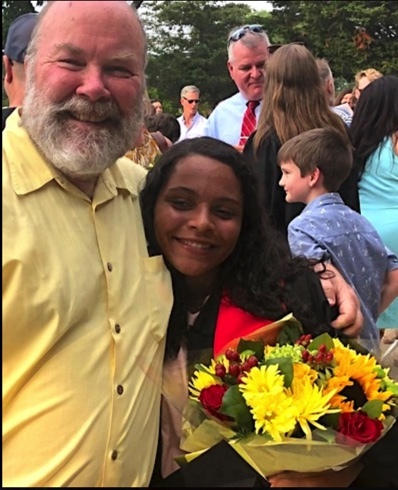
On Saturday, November 23, at 11 a.m. in conjunction with its production of Lorraine Hansberry’s “A Raisin in the Sun,” Bay Street Theater will host “Race: Then and Now, There and Here: A Community Discussion.”
The panelists include clergy and leaders of local African-American nonprofit groups and the discussion was organized by Sag Harbor’s Ken Dorph, who recently shared his thoughts about the history of race relations in this country.
Q: “A Raisin in the Sun” made its Broadway debut 60 years ago. Does it still feel relevant, or does it play like a historical piece offering a glimpse into this country’s past?
It does both. The family viewed the $10,000 at the center of the story as a fortune, which certainly dates it. Overt racial discrimination was outlawed by the Fair Housing Act of 1968, but the issues raised about African-American identity, family stress, and discrimination feel absolutely current.
Q: The play explores the practice of “redlining” which resulted in segregation of neighborhoods, particularly in northern cities. Can you touch on the long-lasting effects of the practice, particularly on Long Island?
The greatest build-up of American wealth happened with the massive investment in the interstate system and the suburban housing boom after WWII. African-Americans, already robbed of their wealth under slavery and Jim Crow, were denied access to this boom. Long Island was set up to enable White Flight — the “Ur” suburb, Levittown, excluded blacks — as did others. The GI bill did not finance blacks. Structures were set in place to disfavor black migration, such as discouraging buses on the Southern State (read “The Powerbroker”). Our globally unique, insane American policy of local real estate taxes paying for schools has led to vastly unequal education levels. Long Island has not only the smallest school districts in the nation but among the most segregated, and growing more segregated.
As a result of this, average African-American income is about 60 percent of white income while African-American wealth is closer to 5 percent. Parental education and wealth are the greatest predictors of the next generation’s wealth. We now have one of the lowest rates of upward mobility of advanced nations (Horatio Alger is dead). Instead of compensating our black co-citizens for centuries of theft, we continue to punish them. “What happens to a dream deferred? Does it dry up like a raisin in the sun?”
Q: Do you think this is a history that most people understand today?
In my experience, few white Long Islanders are aware of the deep history of segregation here and its effects. It is certainly not taught in the schools.
Q: There’s a general perception that racist attitudes are more prevalent in the South, but northerners often don’t recognize or acknowledge racism in their midst. Can you address that?
I was taught as a child that slavery and racism were ‘Southern sins.’ Slavery lasted in New York State until 1827. Northerners were both the greatest investors in slavery (see “Traces of the Trade”) and beneficiaries. Stolen African-American labor planted the seeds of our industrial revolution, with cotton textiles, and of our financial markets (read “Slavery’s Capitalism”). Wall Street was New York’s first official slave market and enslaved Africans built the eponymous wall. We are now learning more about slavery here on Long Island, thanks to the good work of efforts like Sylvester Manor and the Plain Sight Project. The South was forced to desegregate under the 1964 Civil Rights Act while the 1974 Supreme Court case Milliken sanctioned segregated suburbs here in the North. This unchallenged institutional racism has led to greater inequality and segregation in the North.
Q: Given what’s happening in the current social and political climate in this country, what message does “A Raisin in the Sun” offer today’s audiences?
Americans are generally a fair people. If they know the history they are far less likely to blame the victims. The family in “A Raisin in the Sun” are humans, with conflicts, doubts, worries, and deep familial love. Good stories, from James Baldwin to the film “Harriet,” help to dismantle our racist instincts as we see and feel our common humanity.
Q: Why did you want to organize this panel and what do you hope will come from it?
We are at a unique moment in our history, a juncture. The election of an openly racist president and the growing wealth disparity have caused fair-minded Americans to question many of our basic assumptions about who we are and where we want to go. Caring conversations among neighbors can help calm our fears and give us the strength, ideas, and courage to build a better, more inclusive future. Following the free hour-long discussion, audience members are encouraged to join panelists for lunch at Page at their own cost.
A matinee performance of “A Raisin in the Sun” will begin at 2 p.m. at Bay Street. To purchase tickets, visit baystreet.org.